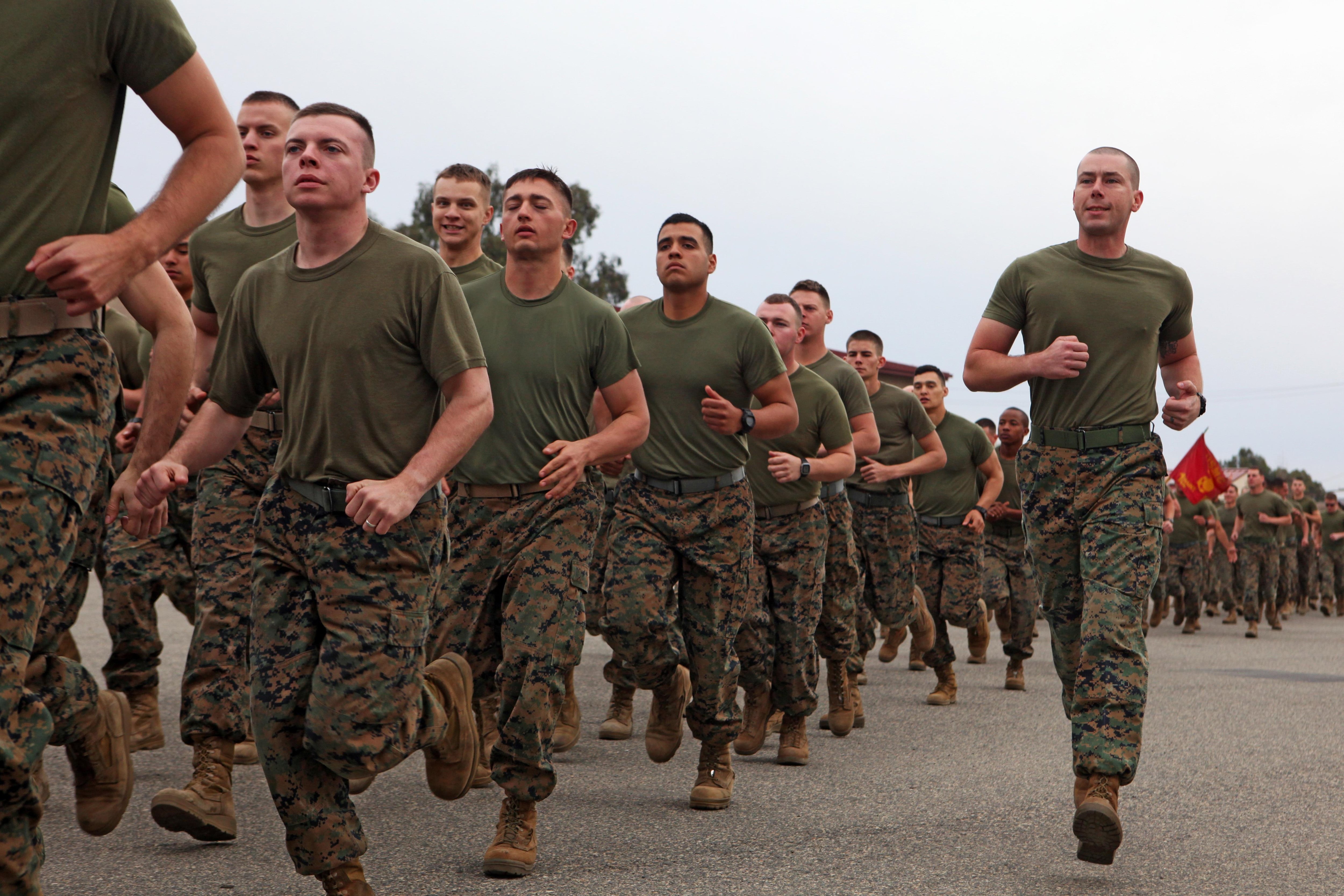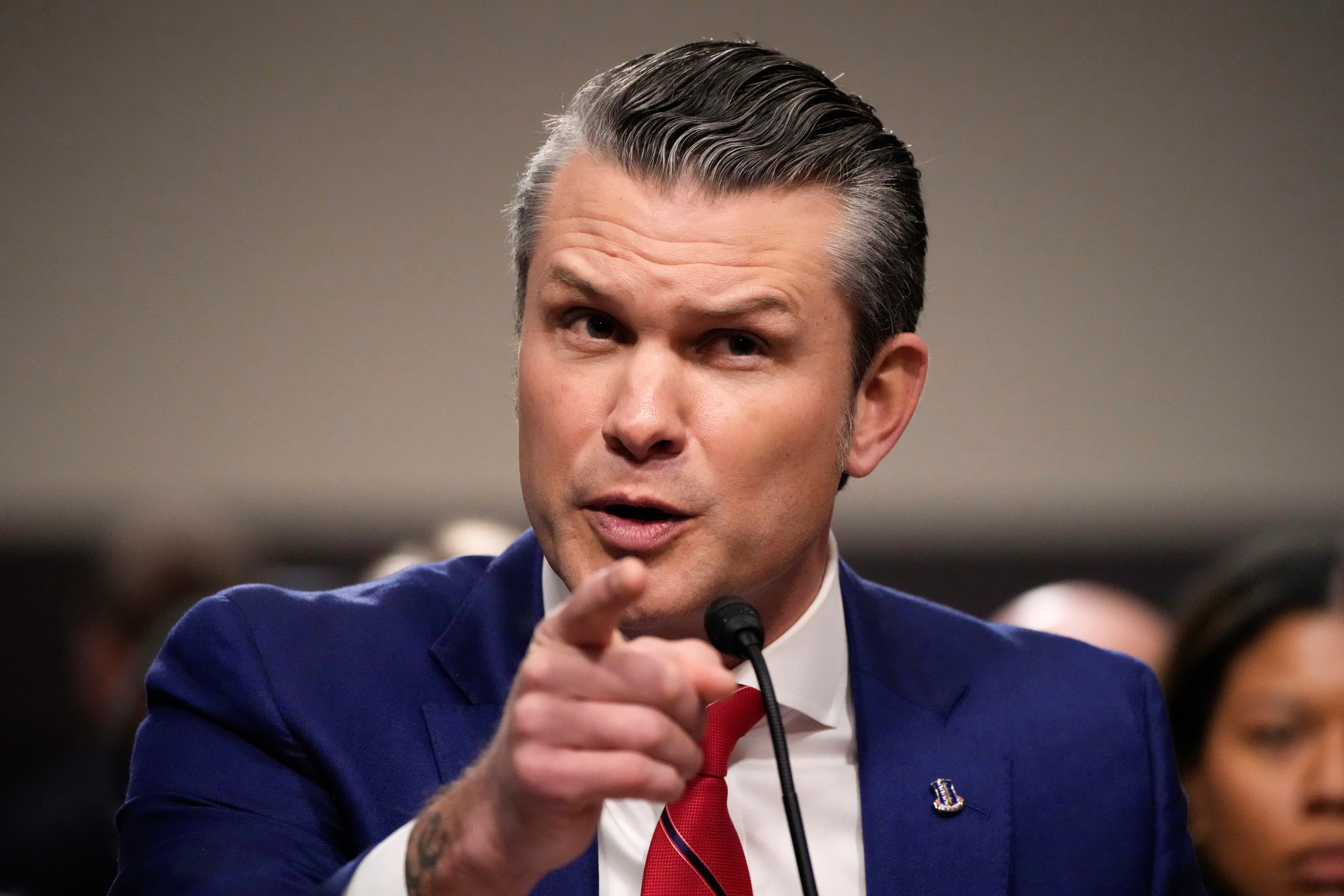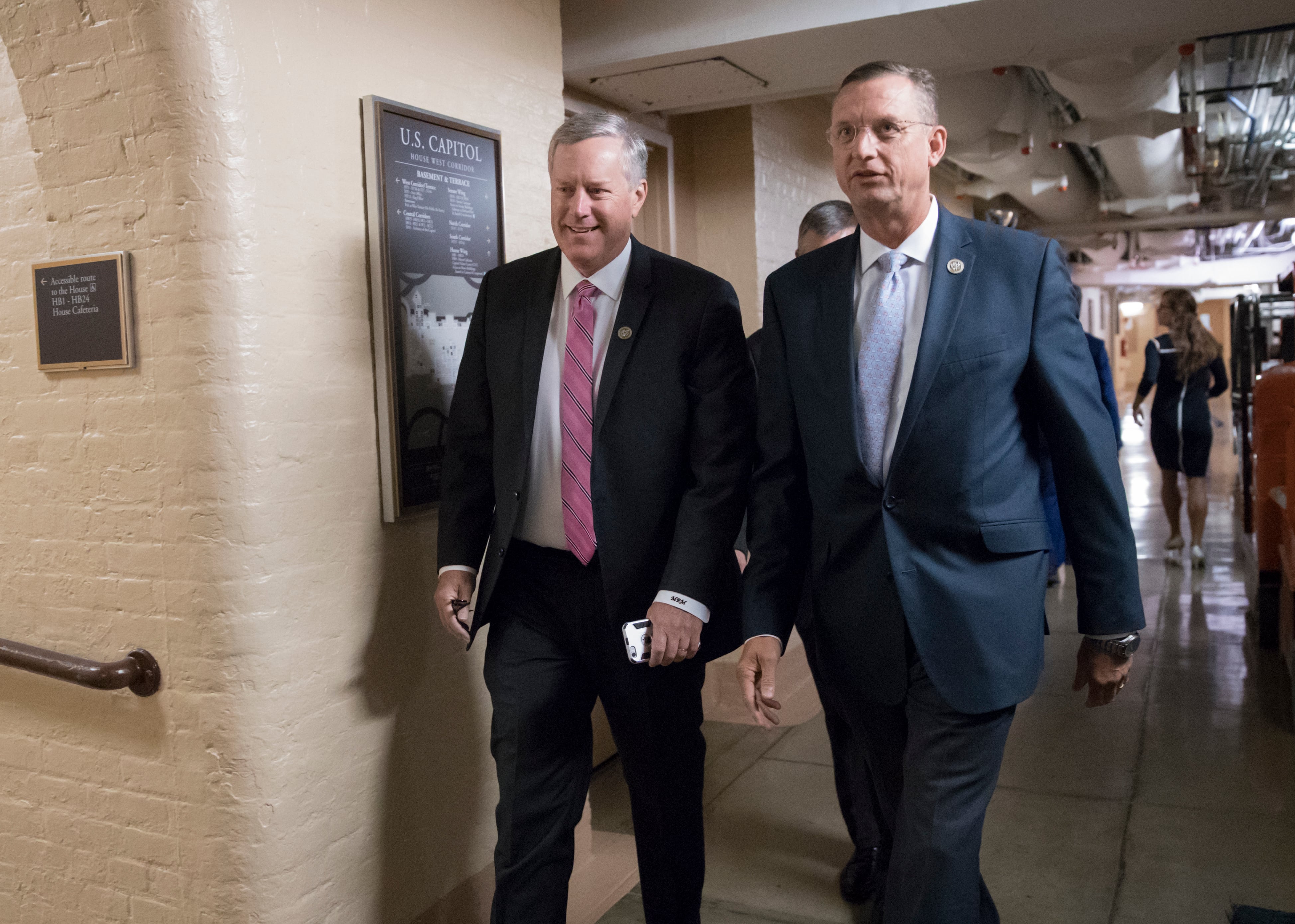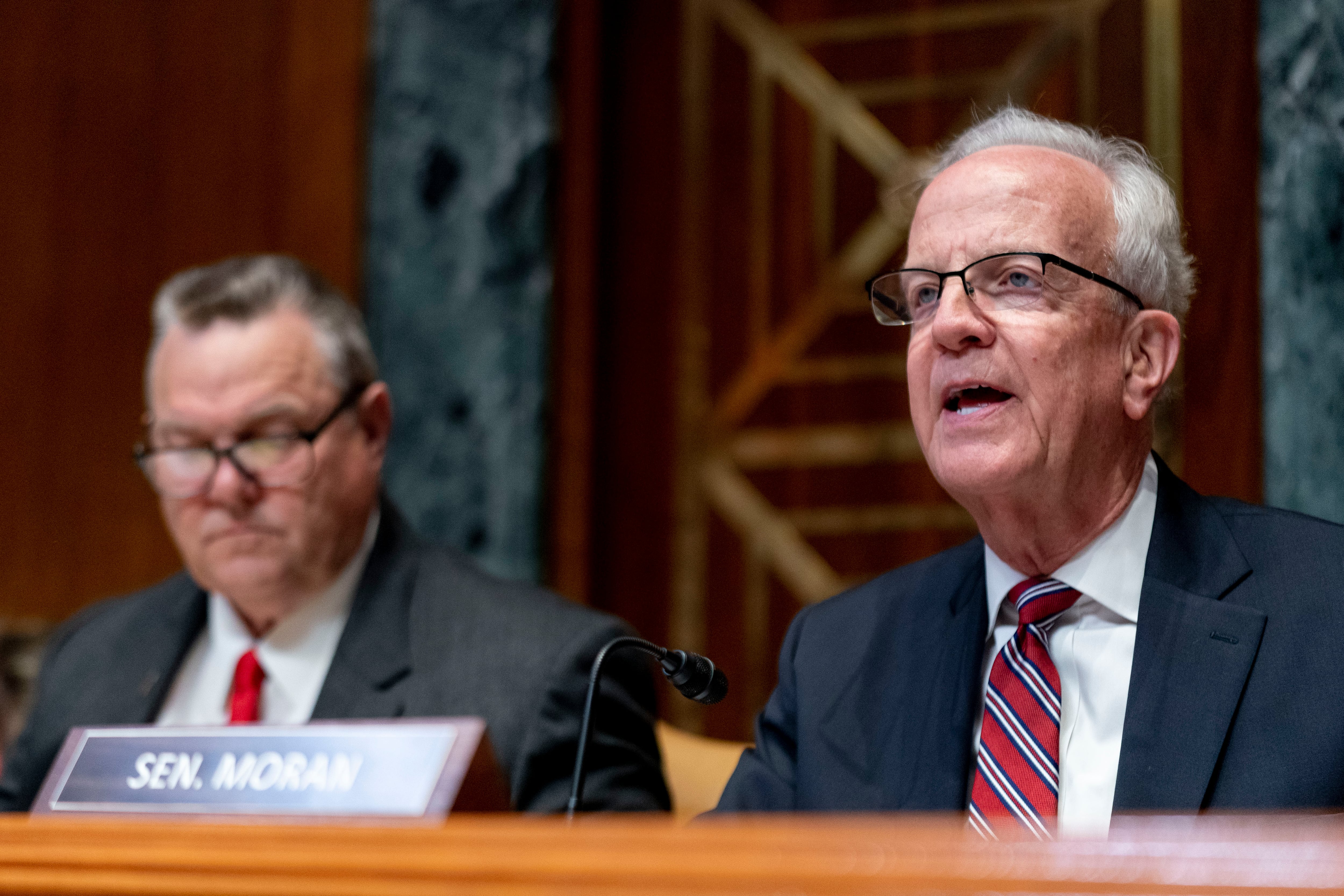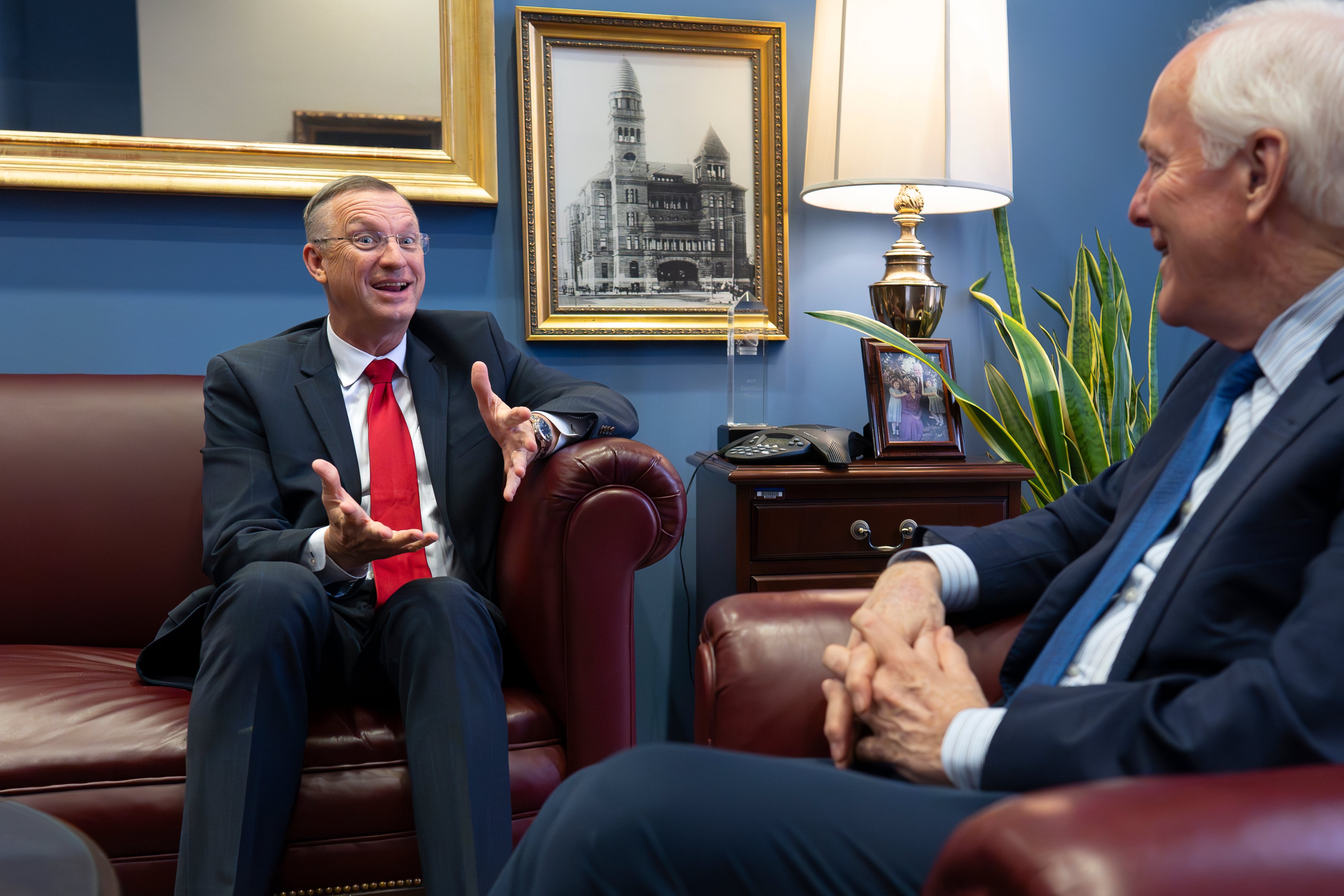The public face of the military working dog community mostly comes from TV and movies, which feature these dogs with impeccable detection skills, incredible obedience and lightning speed.
But what it takes to get there isn't always depicted on screen.
With "Megan Leavey," the Hollywood version of a real-life story of a Marine Corps dog handler's heroism, set to hit theaters June 9, Military Times reached out to several service members who work with military working dogs, or MWDs, to see what it's like to be a handler in today's military.
"It is very hard for handlers to watch movies about MWDs nowadays because we are always their biggest critics," said Air Force Staff Sgt. Monica Rodriguez, who's been a K-9 handler for four years. "As far as the mental and physical connection between the handlers and dogs, they are spot on. It is one of the most touching qualities about a dog team.
"The reports on the dog's capabilities to find bombs or drugs are fairly modified due to obvious reasons, but it paints a good picture."
From fitness to post-traumatic stress to retirement, here's some more of that picture, courtesy of MWD handlers who are in, or recently out of, uniform.
50 pounds, plus pup
"Being physically fit in Security Forces K-9 is a crucial part of our job, especially in deployed locations," said Rodriguez, who is stationed at Joint Base Andrews, Maryland, and has performed 15 presidential protection missions. "We have to have the strength to get ourselves and our dogs out of harm's way. We have to be able to lift our dogs as well as wear 50-plus pounds of gear."
The dogs can weigh up to 100 pounds. And like their handlers, they have to stay in shape.
"We have to be informed of different ways the environment can affect our MWDs and be prepared to respond in any given situation to care for our MWD," said Air Force Staff Sgt. Sara Lyons, a five-year dog handler who works out five or six days a week while serving at Italy's Aviano Air Base. "My MWD also gets a good amount of exercise during work by walking patrols and training."
The fitness standards don't change for male and female handlers — and neither does the weight of a 100-pound dog. That's fine by the female handlers who were interviewed.
"As a female, especially in the military, you want to be treated as an equal," said Heather Cortez, a former senior airman who handled dogs for four years in uniform and now works for a civilian K-9 company. "I've always been determined and independent, that is how I got to where I was in my career. No one helped me along the way or did my training or tests for me. I definitely had support over the years from family and friends, but everything that I accomplished up to that point in life I did on my own. And as a female you want your male counterparts to recognize that as well and treat you how they treat the guys."
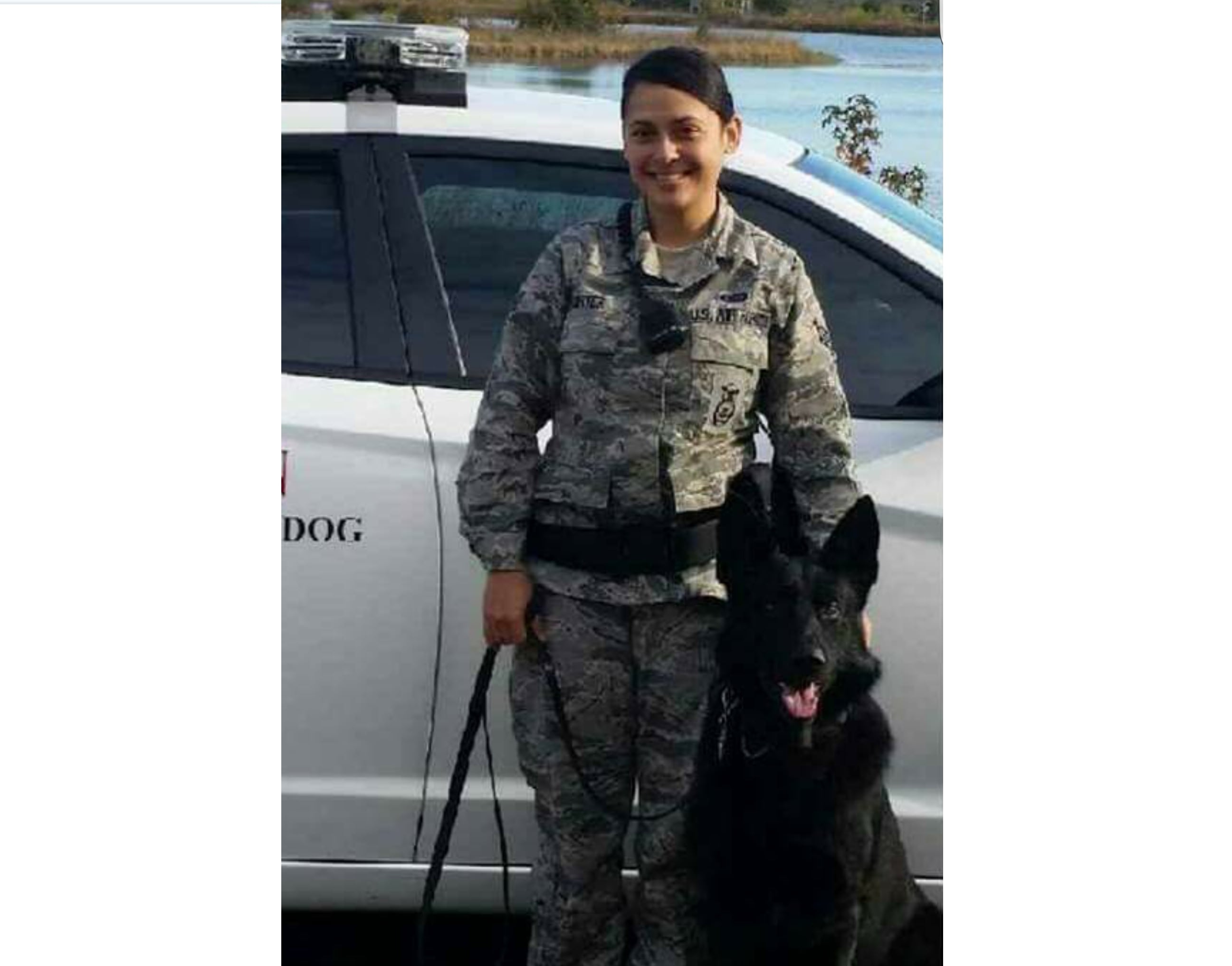
Then-Senior Airman Heather Cortez poses with her military working dog, Blecky. Cortez served as a military working dog handler for four years and now handles working dogs for a private-sector company.
Know your dog
Preparing for physical challenges may be critical to the job, but managing a dog's stress level, and knowing its warning signs, can be just as important. The dogs are military assets and can't be treated like children, the handlers said, but they can break down, and their will to work can suffer — or disappear altogether.
"These dogs are affected by stress and PTSD the same way we are," Rodriguez said. "Some of us can't stand to hear the sound of an explosion or a back fire to a vehicle. It's the same with them. Some dogs may shy away and some dogs may [be aggressive] toward the handler or someone else. You never know until you experience it with them."
Prep work can involve exposing the dogs to "stressful scenarios to help them combat future situations that might cause stress," said Air Force Tech. Sgt. William Stone, a kennel master at Joint Base Andrews. The dogs are put on a cycle that encourages "as much rest as possible," Stone said, and veterinarians are on call when needed.
Despite the support network and advanced training methods, the basic challenge faced by handlers isn't much different, at least on the surface, from any dog owner who's tried to train their pooch.
"In my opinion, the most difficult part of the training process is not knowing what the dog is actually thinking," Rodriguez said. "A simple task can take so long for the dog to learn, and for us humans it can get frustrating."
However, the learning curve isn't always bent toward the dogs.
"All handlers get the same training, but some are new to K-9," Cortez explained. "Some dogs might be pretty advanced, but if their handler is new, they have to do baby steps along with them. That can also frustrate the dog because he or she may just feel like you are in their way."
Saying goodbye
One common, but usually misstated, theme of MWD stories comes at the dog's retirement. Often there is talk of reunion with a handler, but there's rarely a mention about other handlers who worked with the dog at some point, and how they all want to take the dog home with them.
"A lot of reports will say an MWD got reunited with his or her handler, but what some people don't know is that dog has most likely had multiple handlers," Cortez said. "It's kind of sad because you wait until the dog is able to retire, but in the end you most likely won't get to take the dog home with you because someone else will get the opportunity first."
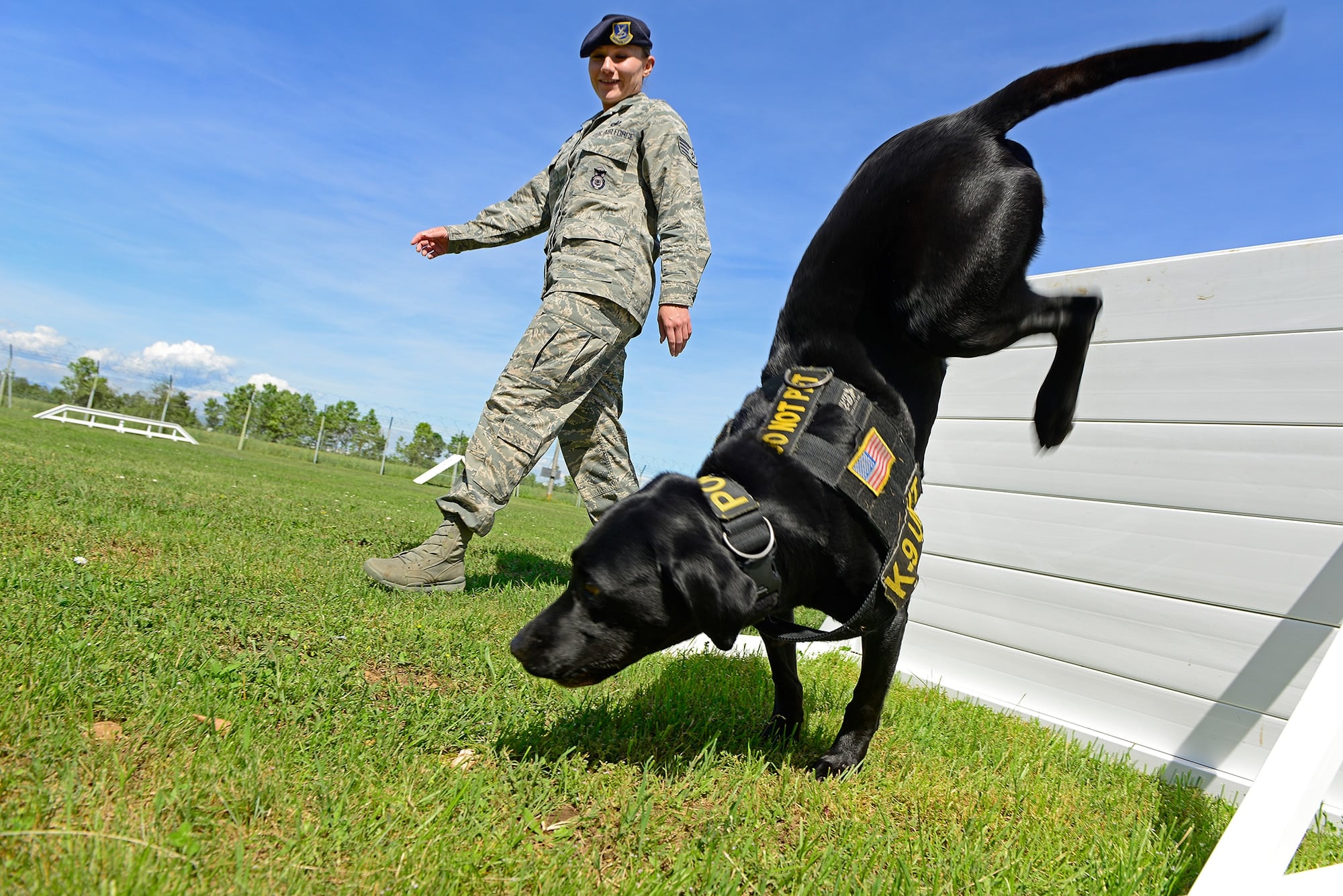
Staff Sgt. Sara Lyons, a military working dog handler with 31st Security Forces Squadron, takes her dog JD through an obstacle course May 16 at Aviano Air Base, Italy.
Photo Credit: Airman 1st Class Ryan Brooks/Air Force
It’s a particularly difficult part of a job where building a relationship with your partner is essential to the mission.
"The K-9 career field is a bond with an MWD that you won't ever forget," Lyons said. "There will be challenging days, but they are all worth it."
The other dog handlers interviewed had a similar message. As Rodriguez put it, "Our job consists of blood, sweat and tears, but that's what makes us a special breed. We are very passionate about our jobs and our partners because they are not only working dogs, they are family. We literally trust them with our life."
From the start of the shift, Cortez said, "when you get your dog from the kennel, you make his or her whole day." It creates a relationship that goes beyond the job, she said — though some things are better left at the office.
"I have two cats at home that I adore very much," she said.

